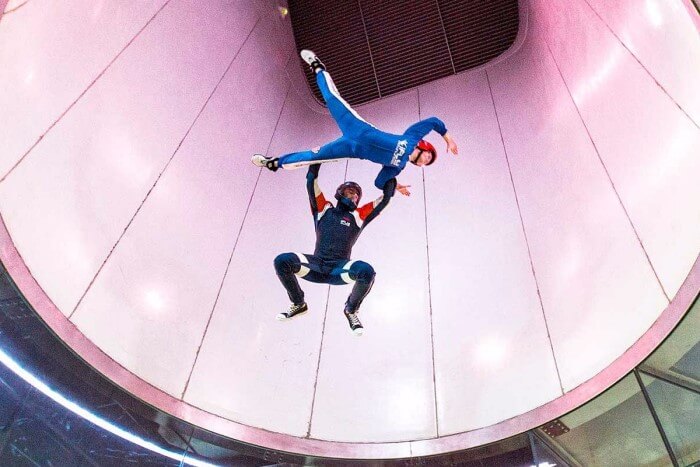Those who have experienced skydiving often describe it as an unforgettable adrenaline rush that can't be matched by any other activity. This excitement goes beyond just a thrill-seeking adventure; it becomes an obsession for those who take the leap of faith.
In this blog post, we'll explore the rich history of skydiving, from its pioneers to the incredible space dives of the modern era, and try to understand why it continues to be one of the most exhilarating and accessible adventures for the general public.
Skydiving History:
Skydiving's mainstream origins can be traced back to its military roots. Parachute jumps were initially employed for military purposes during both World Wars. However, it was the fearless individuals who dared to experiment with this exhilarating activity as a recreational sport which truly shaped its future. The earliest chapters of this exhilarating sport can be traced back to the late 18th century when a Frenchman, André-Jacques Garnerin, made the world's first recorded parachute descent.
Garnerin's feat, however, was not as successful as most would have thought. As he hadn't included an air vent at the top of his prototype, his 3,200ft descent was wildly out of control, leaving onlookers wondering whether he had just signed his own death wish.
Thankfully, like most pioneers, his survival, along with the information he got from that first jump, laid the foundations for further experiments to demonstrate its potential to the world.
In World War I, observational air balloons were frequently used, especially in areas that implemented trench warfare. Men were posted in the airborne balloons for long periods of time. Although they were heavily guarded, they were still vulnerable to enemy aircraft. To mitigate the danger of being a stationary target in hostile territory, operators were equipped with emergency parachutes that allowed them to escape quickly and effectively if they were attacked. The first emergency parachute bailout via aeroplane occurred in 1922.
In the mid 1950's, Raymound Young coined the term 'skydiver' to refer to his fellow enthusiasts in the air sport. During the 1960s, commercial skydiving centres and schools began to emerge. Since Joseph Kittinger's record-breaking parachute jump from an open-air gondola at 102,800 feet in the 1960s, skydiving has continued to attract adventure-seekers who strive to fall faster and from greater heights than their predecessors. Interestingly, Kittinger's record held for over half a century until it was broken by Felix Baumgartner in 2012.
The growth of skydiving as a recreational activity:
The Second World War played a pivotal role in popularising skydiving as a recreational activity in the post-war era. Firstly, the extensive military training of paratroopers exposed a considerable number of individuals to the thrill of skydiving.
This newfound passion led many to seek opportunities for civilian skydiving after the war, contributing to the sport's growth. Secondly, the surplus of military parachutes and equipment, along with increased public awareness and media coverage during the war, made skydiving more accessible and alluring to the public.
Therefore, the formation of skydiving clubs and organisations provided a sense of community and safety standards, further cementing the sport's popularity. From there on in, more and more people became attracted to the sport and its popularity grew rapidly.
Popular World Records:
In the world of skydiving, records are made to be broken. It is an extreme sport which means when they are broken, especially in today's world, it generates coverage, not just in the extreme sports world, but in mainstream media too.
Two legendary leaps come to mind. In 2012, Austrian skydiver Felix Baumgartner made history by jumping from an astonishing altitude of approximately 128,100 feet. That is over 24 miles! His daring feat not only set the record for the highest altitude skydive but also achieved the fastest freefall speed at the time, reaching speeds of about 843.6 miles per hour.
Just two years later, in 2014, Google executive, Alan Eustace, took skydiving to new heights, quite literally. Eustace shattered the previous record by making a jump from the Earth's stratosphere at an incredible altitude of approximately 135,890 feet – nearly 26 miles.
His achievement marked a pivotal moment in the world of skydiving and brought the concept of space diving into the spotlight.
Where next?:
You guessed it. If you couple Alan Eustace's feat with the advancement of the space tourism sector, the possibility of future space diving becomes a much more believable prospect. Could space diving clubs be the next frontier for this extreme sport?
If you're interested in taking the plunge yourself, then you can visit our dedicated Skydiving Experiences page. Alternatively, if the thought of tumbling miles back down to Earth is a no-go for you, but you're still intrigued by the sensation of free fall, we now offer a range of Indoor Skydiving experiences across the country, at four dedicated UK iFLY centres, including The O2 in London!



